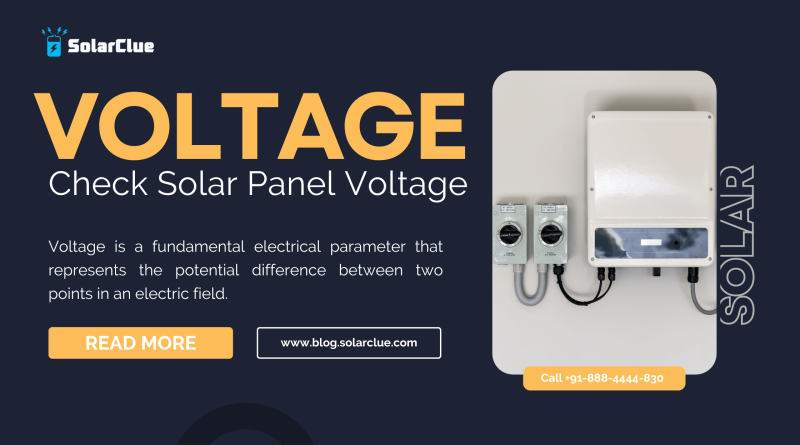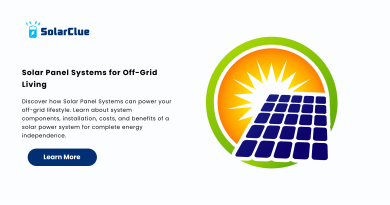How To Check Solar Panel Voltage?
Voltage is a fundamental electrical parameter that represents the potential difference between two points in an electric field. In the context of solar panels, voltage is crucial for determining the energy output and efficiency of the system. It helps in diagnosing performance issues, ensuring the system operates optimally, and predicting energy production.
Table of Contents
Equipment Needed for Measuring Solar Panel Voltage
- Multimeter (Digital or Analog)
- Safety Gear (Gloves, Safety Glasses)
- Solar Panel Specifications Sheet
- Insulated Tools
- Notebook and Pen for Recording Readings
Step-by-Step Instructions for Voltage Measurement
Open Circuit Voltage (Voc) Measurement
1. Ensure Safety: Wear safety gear and ensure the solar panel is disconnected from the load or inverter.
2. Set Up Multimeter: Turn the multimeter dial to the DC voltage setting.
3. Connect Probes: Attach the red probe to the positive terminal and the black probe to the negative terminal of the solar panel.
4. Take Reading: Observe the voltage reading on the multimeter. This is the Voc, representing the maximum voltage the panel can produce without any load.
Voltage Under Load Measurement
1. Safety First: Ensure all connections are secure and wear appropriate safety gear.
2. Set Up Multimeter: Switch the multimeter to the DC voltage setting.
3. Connect to Load: Ensure the solar panel is connected to the load (e.g., a battery or inverter).
4. Measure Voltage: Place the probes on the terminals while the panel is under load. Record the voltage reading.
Interpreting Voltage Readings and Diagnosing Problems
Normal Voltage Readings
- Voc: Typically higher than the voltage under load; check against the panel’s specifications.
- Voltage Under Load: Slightly lower than Voc due to resistance and load.
Abnormal Voltage Readings
- Low Voc: Could indicate shading, dirt on the panel, or a faulty panel.
- Low Voltage Under Load: May suggest issues with the load, poor connections, or partial shading.
Factors Affecting Solar Panel Voltage
Temperature
- High Temperature: Reduces voltage due to increased resistance.
- Low Temperature: Increases voltage; however, performance may vary based on the panel type.
Sunlight Intensity
- High Irradiance: Increases voltage output.
- Low Irradiance: Reduces voltage, leading to lower energy production.
Load
- High Load: Can reduce voltage significantly if the panel is undersized.
- Low Load: Maintains higher voltage closer to Voc.
Safety Considerations When Working with Solar Panels
1. Avoid Water and Moisture: Ensure the work area is dry.
2. Use Insulated Tools: Prevent accidental shorts or shocks.
3. Follow Manufacturer Guidelines: Adhere to safety instructions provided by the panel manufacturer.
4. Work in Pairs: If possible, have someone assist you for added safety.
Additional Voltage Measurements for Troubleshooting
Short-Circuit Current (Isc)
1. Set Multimeter: Switch to current (A) setting.
2. Measure Current: With the panel shorted (positive and negative terminals connected), record the current reading.
Maximum Power Point (MPP)
1. Use MPPT Controller: Connect the panel to an MPPT (Maximum Power Point Tracking) controller.
2. Monitor Voltage and Current: The controller will provide the optimal voltage and current for maximum power output.
Using Voltage Data to Optimize Solar Panel Performance
Typical Voltage Readings and Diagnoses
| Voltage Reading (V) | Possible Diagnosis | Action Required |
|---|---|---|
| Voc is 0 | Disconnected or broken panel | Check connections, replace panel |
| Voc is low | Shading, dirt, or partial fault | Clean panel, remove obstructions |
| Voltage under load is low | High load, poor connections, partial shading | Check connections, reduce load, clean panel |
| Normal Voc and Load Voltage | Panel operating normally | Regular maintenance |
| High Voc but low load voltage | Faulty load or connections | Inspect and replace faulty components |
Practical Tips for Accurate Readings
1. Conduct Measurements at Peak Sunlight: For the most accurate readings, measure voltage during midday when sunlight is strongest.
2. Regular Maintenance: Clean panels regularly and check for shading or obstructions.
3. Record Readings: Keep a log of voltage readings to track panel performance over time.
Conclusion
Measuring solar panel voltage is essential for maintaining and optimizing solar energy systems. By understanding how to measure and interpret voltage readings, you can diagnose issues, improve performance, and ensure your solar panels are operating efficiently.
Here at SolarClue®, we offer a smart, practical, and “beautiful” solution. You will be answered for all the questions related to Solar.
We provide all kinds of brands that are the Best Solar panels in India.
If you are the one who is planning for the solar power system. Don’t hesitate to contact our team!
Looking forward to empowering you with solar energy, just like hundreds of our other clients!
FAQs
1. What is the difference between Voc and voltage under load?
Voc is the maximum voltage a solar panel can produce without any load, while voltage under load is the voltage when the panel is connected to a load.
2. Why is my Voc lower than expected?
Low Voc can result from shading, dirt, or a faulty panel.
3. How often should I measure solar panel voltage?
Regularly, especially if you notice a drop in energy production or during routine maintenance.
4. What safety precautions should I take when measuring solar panel voltage?
Wear safety gear, use insulated tools, and ensure the area is dry.
5. Can temperature affect my voltage readings?
Yes, higher temperatures typically reduce voltage, while lower temperatures can increase it.



